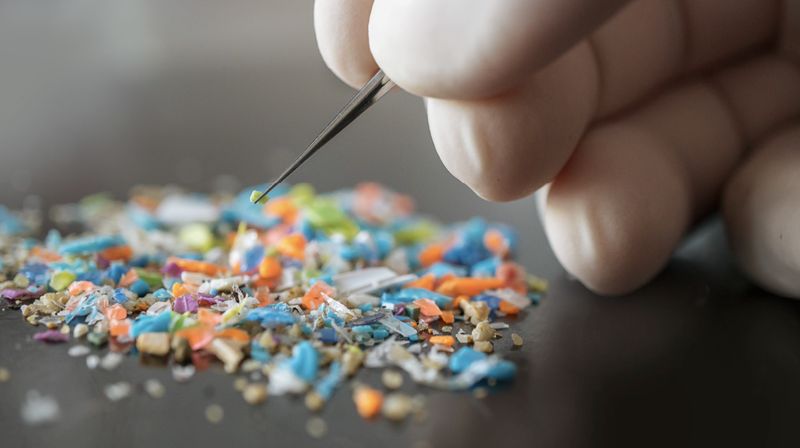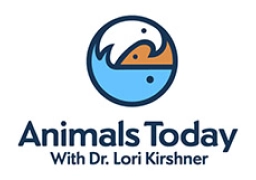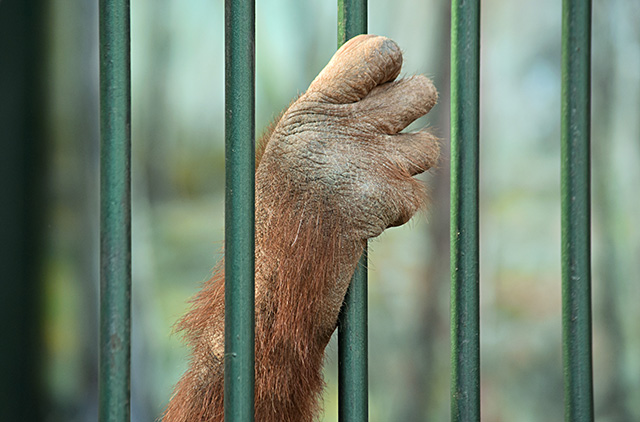Microplastics and Pets: Is Exposure and Consumption a Health Risk?
Microplastics and Pets: Is Exposure and Consumption a Health Risk?
September is Responsible Pet Ownership Month – we know there are too many calendar holidays to count these days, but this is one we had to celebrate loudly, of course. We at AIA would like to wrap this month up by focusing on a topic within the subject of responsible pet ownership that we feel hasn’t gotten enough attention: microplastics and our pets.

Microplastics are small plastic particles less than 5mm in size, now a common contaminant in terrestrial and aquatic ecosystems in our environment. One threat they pose: they can carry toxic chemicals and materials, and “can easily penetrate organelles and cell membranes” as the the Journal of Agriculture and Food Research puts it.
Beyond being carriers of toxicity, the particles themselves are also hazardous for our health as humans, and as studies are beginning to find, for our pets and animals, when ingested or absorbed. When we refer to “microplastics” throughout the rest of this piece, there are really two kinds of microplastics that we’re all exposed to.
- Primary microplastics are plastic items that are originally manufactured in a miniscule size for cosmetic, agricultural, or pharmaceutical products. Think about the myriad of small plastic fibers, pellets, beads and seeds you find in cleansers, paint, and outdoor products.
- Secondary microplastics exist after they’re sheared off from originally larger plastic items. Those larger plastic items include, but aren’t limited to, tires, couches, kitchen gadgets, and the very act of industrial production processes.
Research has recently discovered that the average human ingests a credit card-sized amount of microplastics every week. Here are the health effects known of, so far, when microplastics make their way into the human body:
- Studies conducted on both human and animal cells suggest that the presence of microplastics in our bodies could be linked to cancer, reproductive harms, and heart attacks. Biological changes like inflammation, damaged immune systems, modified metabolic activity, and atypical organ development have also been linked to microplastic presence in cells.
- The amount of microplastics found in the human brain has increased by 50% from 2016 to 2024, and a correlation between human brains with higher levels of microplastics and dementia has been suggested.
- Recent work from University of California, San Francisco, strengthened the theories that microplastics harm reproductive, digestive and respiratory health. An additional link to colon and lung cancer was suggested.
- The New England Journal of Medicine published one of the papers to directly research the health effects of microplastics in March 2024, finding that patients who had higher levels of microplastics in their artery plaque were more likely to suffer from a heart attack, strokes, or death in the following years.
- With microplastic particles present in the air, it’s been suggested that inhalation of them is harmful for our lungs.
While detailed, long-term research on the effect of microplastics on the human body are still underway, the damage established and suggested by the studies that have been conducted so far paint a grim picture. It stands to reason that the effects on our pets are equally as hazardous. Here’s what has been found so far about animals in our ecosystem and microplastics:
- The Journal of Agriculture and Food Research published a report in 2024, finding that the presence of microplastics in animals had the potential to disrupt gastrointestinal tracts, lead to organ failure, bacterial infections, damaged reproductive systems, and interfere with overall digestive efficiency.
- The animals included in this study ranged from camels and cattle to aquatic and terrestrial birds, each animal was found to experience unique potential harm from the presence of miniscule plastic particles.
- A study published in Toxicological Sciences conducted by a team of scientists at the University of New Mexico found that dogs with higher levels of polyvinyl chloride (a kind of plastic) had lower sperm counts.
- In the journal, Reproductive Toxicology, a study published back in 2007 found that rats exposed to BPA (Bisphenol A) had disrupted hormonal cycles, which then has the potential interfere with reproductive abilities, organization of the brain, and metabolism within the rat’s system. The study suggests that such effects are potentially happening in other animals.
- Scientists recently discovered alarmingly high levels of microplastic particles in dolphins’ breath, and worry of the lung damage potential.
In our own homes, we’ve got couches, kitchen gadgets, and baubles made from various plastic and synthetic materials, and when microplastics shear off from them, they end up in household dust. Not to mention, in our environment, secondary microplastics from industrial production processes end up in our soil, water, and air. This creates a toxic cycle where our animals eat, drink, inhale or absorb microplastics and the chemical they carry. There are potentially additional sources of microplastic exposure in animals:
- For starters, it’s found in the containers of canned pet food. Dog food cans are BPA lined, and canned cat food is often in PVC-based containers.
- Microplastics also wind up in our pet’s food as it can be created from leftover human food– which is sometimes still wrapped in plastic while it’s added. And the plastic tags attached to livestock’s ears end up in the facilities without removal before they’re blended into the pet food.
- Pet toys can contain phthalates (also known as plasticizers) which add durability but as pets chew on their toys they’re exposed to hazardous levels of those chemicals. Plasticizers have been proven to negatively affect an animal’s reproductive system and to interfere with endocrine function. Phthalates are regulated in children’s toys, but not for pet toys.
So, what can we do? Here are a few ways you can immediately reduce your pet’s (and your own) exposure to microplastic particles around the house:
- In order to limit the exposure to secondary microplastics our animals might be inhaling from the dust in our home, vacuum, dust, and clean regularly.
- Consider purchasing good quality air purifiers. Everyone in the household will benefit from that.
- Keep a keener eye on what pet products are made from. It’s difficult to completely avoid pet products without a single trace of plastic in them, but there are options that veer in a better direction. For example, many pet toys, collars, and leashes, are made with all natural components, such as hemp.
- Avoid shampoos and soap products with microbeads in them.
- For food and treats, stick to BPA-free packaging and bonus points if it’s eco-friendly.
As the deleterious effects of microplastic ingestion in humans become more widely understood, and widespread actions addressing exposures are undertaken, we would expect the pet industry to follow. Right now, we as pet lovers can implement some simple measures as noted above as we follow the evolution of this unfortunate situation.
Sources Referenced:
https://www.smithsonianmag.com/smart-news/scientists-have-found-microplastics-in-dolphin-breath-for-the-first-time-180985287/?itm_source=related-content&itm_medium=parsely-api
https://med.stanford.edu/news/insights/2025/01/microplastics-in-body-polluted-tiny-plastic-fragments.html
Pets vs. Plastics Report
https://www.ciel.org/breathing-plastic-the-health-impacts-of-invisible-plastics-in-the-air/
https://www.smithsonianmag.com/smart-news/the-human-brain-may-contain-as-much-as-a-spoons-worth-of-microplastics-new-research-suggests-180985995/
https://www.earthday.org/pets-and-plastics-the-hidden-danger/
https://www.sciencedirect.com/science/article/pii/S2666154324002953
https://www.earthday.org/the-hidden-dangers-in-pet-products-what-every-pet-owner-needs-to-know/
https://pubmed.ncbi.nlm.nih.gov/38446676/
https://www.sciencedirect.com/science/article/abs/pii/S0890623807001918?via%3Dihub
https://academic.oup.com/toxsci/article/200/2/235/7673133?login=false
https://www.abc.net.au/news/2018-06-19/pet-food-insider-lifts-lid-on-plastic-and-rubbish-going-into-pe/9875184
for News and Updates!



